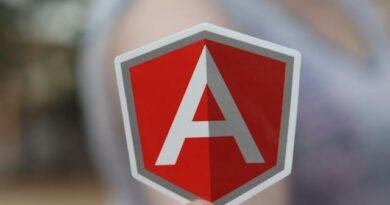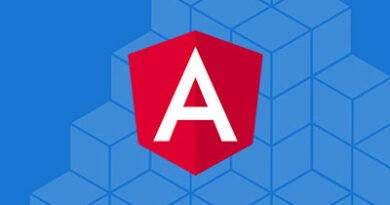Top 20 Basic Angular Interview Questions and Answers You Must Prepare in 2024
- What is Angular?
- Angular is a popular open-source front-end web application framework developed and maintained by Google. It simplifies the development and testing of such applications by providing a framework for client-side MVC (Model-View-Controller) and MVVM (Model-View-ViewModel) architectures.
- Explain the basic architecture of an Angular application.
- An Angular application follows a modular structure with modules, components, services, and directives. The core building blocks are modules, which contain components, and services handle business logic.
- What is Two-Way Data Binding in Angular?
- Two-Way Data Binding is a feature in Angular that allows automatic synchronization of data between the model and the view. Changes in the model are reflected in the view, and vice versa.
- What is the purpose of NgModule?
- NgModule is a decorator in Angular used to define a module. It helps organize an application into cohesive blocks of functionality and supports lazy loading.
- Explain the role of @Component decorator.
- @Component is a decorator in Angular used to define a component. It includes metadata such as selector, template, and style, and it helps Angular understand how to process and use the component.
- What is Angular CLI, and how is it beneficial?
- Angular CLI (Command Line Interface) is a tool that simplifies the development process by automating common tasks such as project scaffolding, build processes, and dependency management.
- What is Dependency Injection in Angular?
- Dependency Injection is a design pattern used in Angular to inject dependencies into a component or service, making the application more modular, maintainable, and testable.
- What is the purpose of ngFor directive?
- ngFor is a directive in Angular used for iterating over lists (arrays) and rendering a template for each item in the list.
- Explain the difference between ngOnChanges and ngOnInit.
- ngOnChanges is a lifecycle hook that gets called when the input properties of a component change, while ngOnInit is called after the component has been initialized.
- What is the purpose of Angular Router?
- Angular Router is a powerful navigation library that allows developers to manage navigation and view states in Angular applications. It enables the creation of single-page applications with dynamic content loading.
- What is Angular ng-template?
- ng-template is an Angular directive used to define templates that can be used for rendering content conditionally or for creating reusable templates.
- What is the Angular CLI command to generate a new component?
- The command is:
ng generate component component-nameor its shorthand versionng g c component-name.
- The command is:
- What is the purpose of services in Angular?
- Services in Angular are used to encapsulate and organize the business logic of an application. They provide a way for different parts of the application to communicate and share data.
- What is the purpose of Angular directives?
- Directives in Angular are markers on a DOM element that tell Angular to attach a behavior to that DOM element or even transform the DOM element and its children.
- Explain the difference between ViewChild and ContentChild.
- ViewChild is used to query and get the reference of a child component in the parent component, while ContentChild is used to query and get the reference of a directive or component in the content of a parent component.
- What is Angular ngModel?
- ngModel is a directive in Angular used for two-way data binding. It binds the value of an input element to a property on a component.
- How does Angular handle security issues, such as Cross-Site Scripting (XSS)?
- Angular has built-in mechanisms to mitigate security risks, including a default setting that prevents the execution of unsafe code, a Content Security Policy (CSP) that can be configured, and a sanitizer to sanitize user inputs.
- What is the purpose of the async pipe in Angular?
- The async pipe is used in Angular to automatically subscribe to an Observable and update the view when the data changes. It simplifies the process of working with asynchronous data in templates.
- Explain the role of decorators in Angular.
- Decorators in Angular are used to add metadata to classes. They are prefixed with @ and provide configuration information to the Angular framework. For example, @Component, @NgModule, and @Injectable are commonly used decorators.
- What is the Angular ngIf directive used for?
- ngIf is a directive in Angular used for conditionally rendering or removing elements from the DOM based on a specified condition. If the condition is true, the element is displayed; otherwise, it is removed from the DOM.
“Essential Angular Interview Queries: A 2024 Comprehensive Guide”
“Mastering Angular: Unveiling the Top 20 Interview Questions for 2024”
“Angular Expertise Unleashed: Key Interview Q&A for 2024 Success”
“2024 Angular Interview Mastery: Tackling the Top 20 Questions”
“Angular In-Depth: Navigating the Crucial Interview Landscape (2024)”
“Unlocking Angular’s Secrets: Your 2024 Interview Questionnaire”
“Beyond the Basics: 2024’s Top 20 Angular Interview Challenges”
“Angular Interrogation: A Guide to Acing 2024’s Interviews”
“Elevate Your Angular Game: Top 20 Interview Insights for 2024”
“Cracking the Code: Angular Interview Triumphs in 2024”

